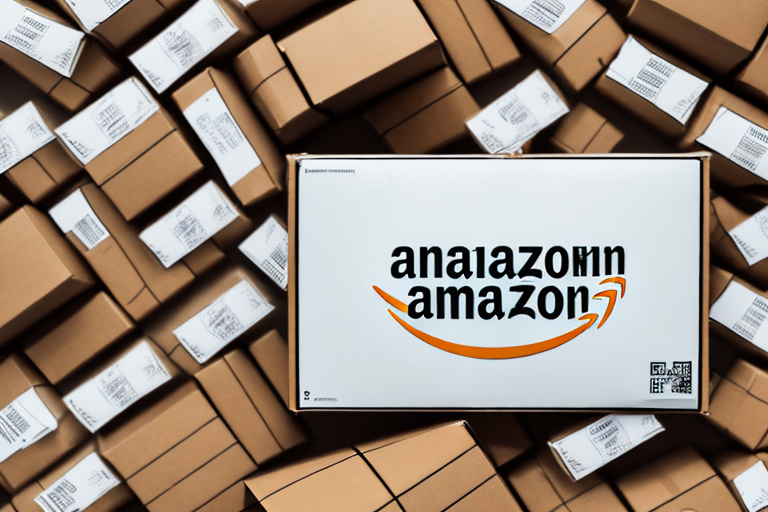Understanding FBA Removal Fees
If you are an Amazon seller utilizing Fulfilled by Amazon (FBA) to manage your inventory, you're likely familiar with FBA Removal Fees. These fees can significantly impact your profitability, making it crucial to understand what they entail and how they operate. This article delves into the intricacies of FBA Removal Fees and offers actionable strategies to help you minimize or avoid them altogether.
What are FBA Removal Fees?
FBA Removal Fees are charges incurred when you request the removal of your products from Amazon's fulfillment centers. Amazon provides a comprehensive service where sellers send their inventory to Amazon warehouses, and Amazon handles storage, packing, shipping, and customer service. However, if you need to retrieve your products for reasons such as discontinuation, seasonal inventory adjustments, or product recalls, FBA Removal Fees will apply.
The fees are contingent upon the size and weight of the product. Products that are hazardous or require special handling may attract higher fees. It's advisable for sellers to factor in these costs before sending inventory to Amazon and to have a contingency plan for potential removals.
How FBA Removal Fees Work
FBA Removal Fees are calculated based on the item's size, weight, and the duration it has been stored in Amazon's fulfillment centers. There are two main components:
- Per-Item Fee: Charged for each unit removed from the warehouse.
- Long-Term Storage Fee: Applied to products stored for more than 365 days.
Fees can fluctuate based on seasonal demands. For instance, during peak holiday seasons, Amazon may increase fees due to higher warehouse utilization. Additionally, opting to dispose of inventory rather than having it returned will incur extra disposal fees.
When are FBA Removal Fees Charged?
FBA Removal Fees are triggered in two primary scenarios:
- Seller-Initiated Removals: When you submit a removal order through Amazon Seller Central.
- Amazon-Initiated Removals: When Amazon removes inventory due to long-term storage penalties or other compliance issues, typically after a 30-day notice period.
Choosing to have Amazon return your inventory will also result in additional shipping fees. Regularly monitoring your inventory and understanding Amazon's storage policies can help mitigate unexpected charges.
Factors Affecting FBA Removal Fees
Several variables influence the amount you’ll pay in FBA Removal Fees:
- Product Size and Weight: Larger and heavier items incur higher fees.
- Storage Duration: Prolonged storage increases costs, especially beyond the 365-day mark.
- Product Category: Hazardous materials or items requiring special handling attract additional charges.
- Seasonality: High-demand periods may lead to fluctuating fees.
- Fulfillment Center Location: Fees may vary based on geographic location and associated operational costs.
Understanding these factors can help you make informed decisions about inventory management and storage solutions.
Calculating FBA Removal Fees
Amazon provides tools to help sellers estimate their FBA Removal Fees accurately. Here's how you can calculate them:
- Navigate to the FBA Removal Fee Calculator on Amazon's Seller Central.
- Enter the product's ASIN (Amazon Standard Identification Number).
- Input the quantity and select the removal destination.
The calculator will generate an estimated fee based on current rates. Keep in mind that these fees are subject to change, so it's essential to regularly verify the latest rates on Amazon's official resources.
For example, as of 2023, the per-item removal fee for standard-size items starts at approximately $0.50 per unit, while long-term storage fees can exceed $6.90 per cubic foot annually for larger items.
Strategies to Avoid and Reduce FBA Removal Fees
Implementing effective strategies can help you minimize or even eliminate FBA Removal Fees:
1. Regular Inventory Monitoring
Use Amazon's Inventory Age and Inventory Health reports to identify slow-moving or excess inventory. Removing these items before they qualify for long-term storage can save substantial fees.
2. Accurate Demand Forecasting
Leverage historical sales data and market trends to forecast demand accurately. This ensures that you replenish inventory in line with actual sales, reducing the likelihood of overstocking.
3. Optimize Product Listings
Enhance your product listings with optimized titles, descriptions, and high-quality images to boost visibility and sales velocity. Higher sales rates decrease the chances of incurring long-term storage fees.
4. Utilize Automated Tools
Invest in inventory management software that offers automated alerts for low stock levels or impending long-term storage fees. Tools like ShipScience Inventory Manager can streamline this process.
Handling Returns and Refunds on Amazon
Returns and refunds can influence FBA Removal Fees in several ways:
- Return Processing: Returned items that are unsellable or damaged may incur removal or disposal fees.
- Refund Shipping Costs: If Amazon cannot restock returned items, you may be responsible for return shipping fees.
Best Practices:
- Maintain clear and accurate product listings to minimize returns caused by customer dissatisfaction.
- Implement a robust quality control process to ensure products meet customer expectations.
- Offer incentives for customers to retain products, such as discounts on future purchases or free gifts.
By proactively managing returns, you can reduce the incidence of unsellable inventory and the associated removal fees.
Common Mistakes and How to Avoid Them
Avoiding common pitfalls can help you manage FBA Removal Fees effectively:
- Neglecting Inventory Age: Failing to monitor how long items have been stored can lead to unexpected long-term storage fees.
- Poor Demand Forecasting: Overestimating sales can result in excess inventory that attracts removal fees.
- Ignoring Product Performance: Not identifying and removing underperforming products can drain profits through accumulated fees.
To sidestep these errors, integrate regular inventory audits, utilize forecasting tools, and continuously analyze product performance metrics.
How to Appeal an FBA Removal Fee Charge
If you believe you've been incorrectly charged an FBA Removal Fee, you have the option to appeal:
- Log in to your Amazon Seller Central account.
- Navigate to the "Performance" tab and select "Account Health."
- Find the specific fee charge you wish to dispute and click on "Appeal."
- Provide detailed evidence supporting your claim, such as shipment records or compliance documentation.
Ensure that all information is accurate and comprehensive to increase the likelihood of a successful appeal. Maintaining meticulous records of your inventory and removal orders will bolster your case.
Tools and Services to Manage Your Amazon Inventory and Avoid FBA Removal Fees
Several tools and services can assist you in effectively managing your Amazon inventory and mitigating FBA Removal Fees:
1. Inventory Management Software
Platforms like ShipScience Inventory Manager offer real-time tracking, automated alerts, and detailed analytics to help you maintain optimal inventory levels.
2. Forecasting Tools
Tools such as ShipScience Forecast utilize machine learning algorithms to predict future sales trends, enabling you to make informed restocking decisions.
3. Consulting Services
Engaging with Amazon FBA consultants can provide personalized strategies tailored to your business needs, helping you navigate complex inventory challenges and fee structures.
4. Amazon Fulfillment Services
Some fulfillment centers offer tiered pricing models or discounts for bulk removals, which can be cost-effective for larger sellers. Explore options within the ShipScience Fulfillment Solutions to find the best fit for your operations.
By leveraging these tools and services, you can streamline your inventory management processes, reduce the likelihood of incurring removal fees, and ultimately enhance your profitability on Amazon.
Conclusion
Understanding and effectively managing FBA Removal Fees is paramount for maintaining profitability as an Amazon seller. By staying informed about the fee structures, monitoring your inventory diligently, and employing strategic management practices, you can minimize unnecessary costs and optimize your business operations. Utilize the tips and tools discussed in this article to navigate the complexities of FBA Removal Fees and enhance your overall selling experience on Amazon.




















